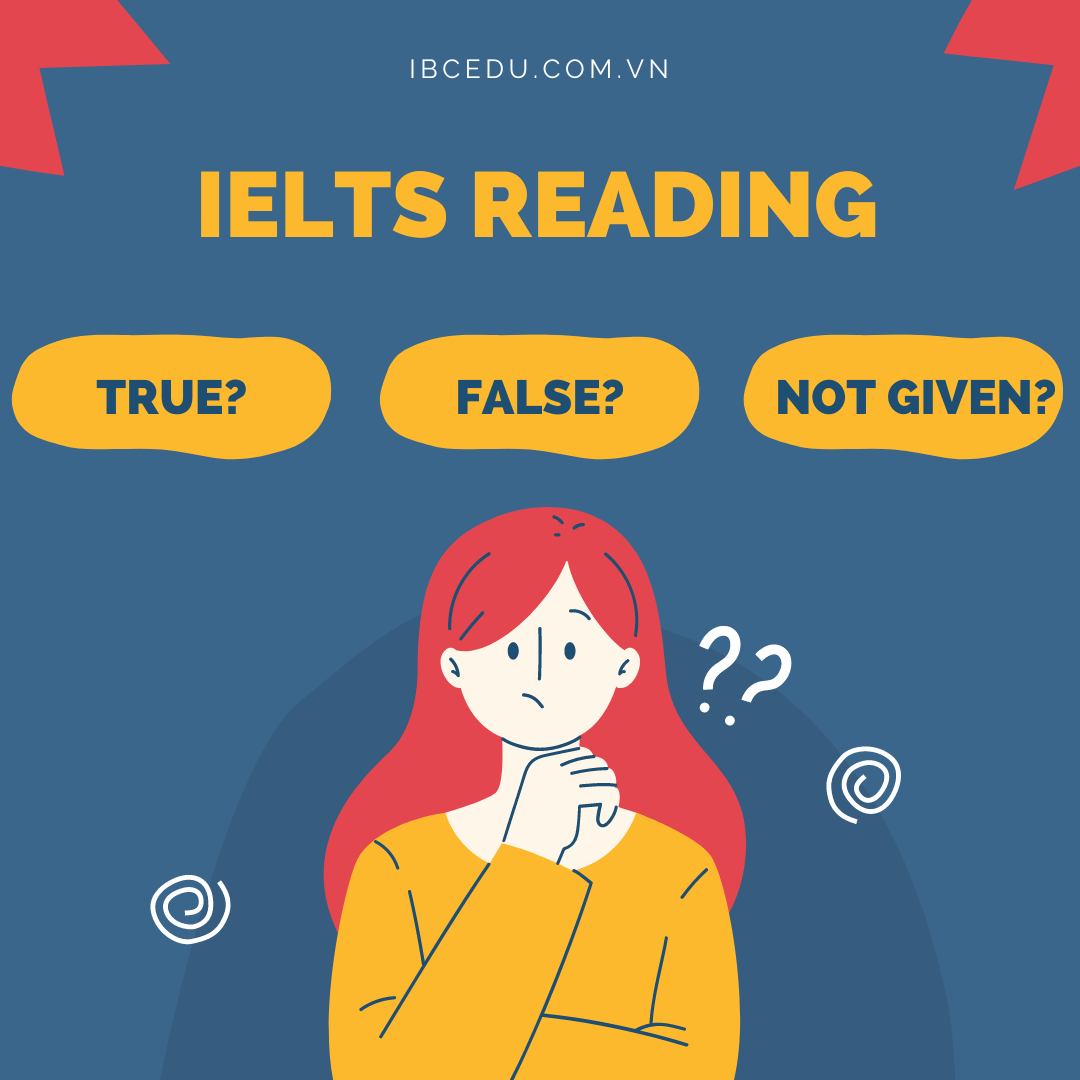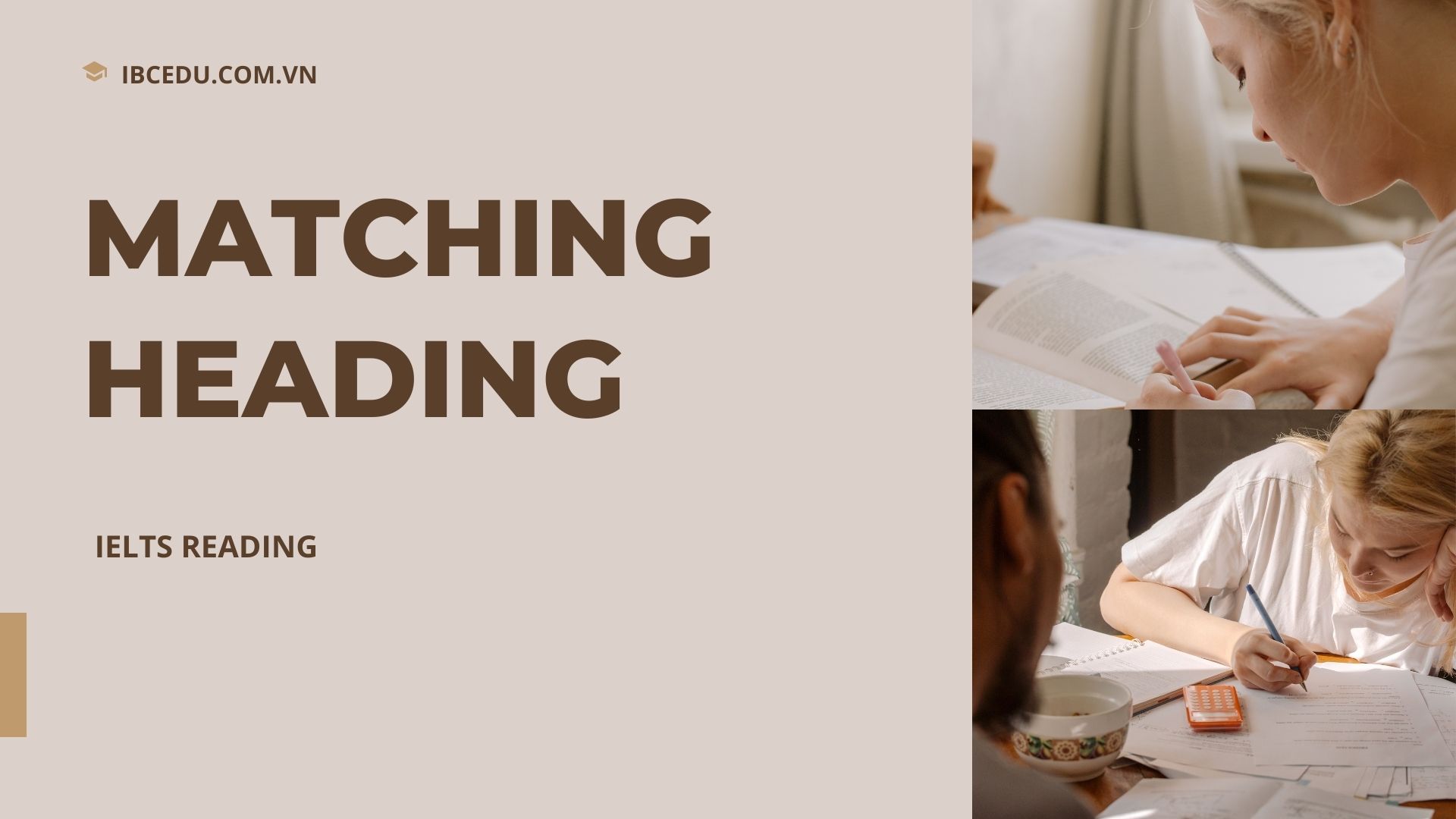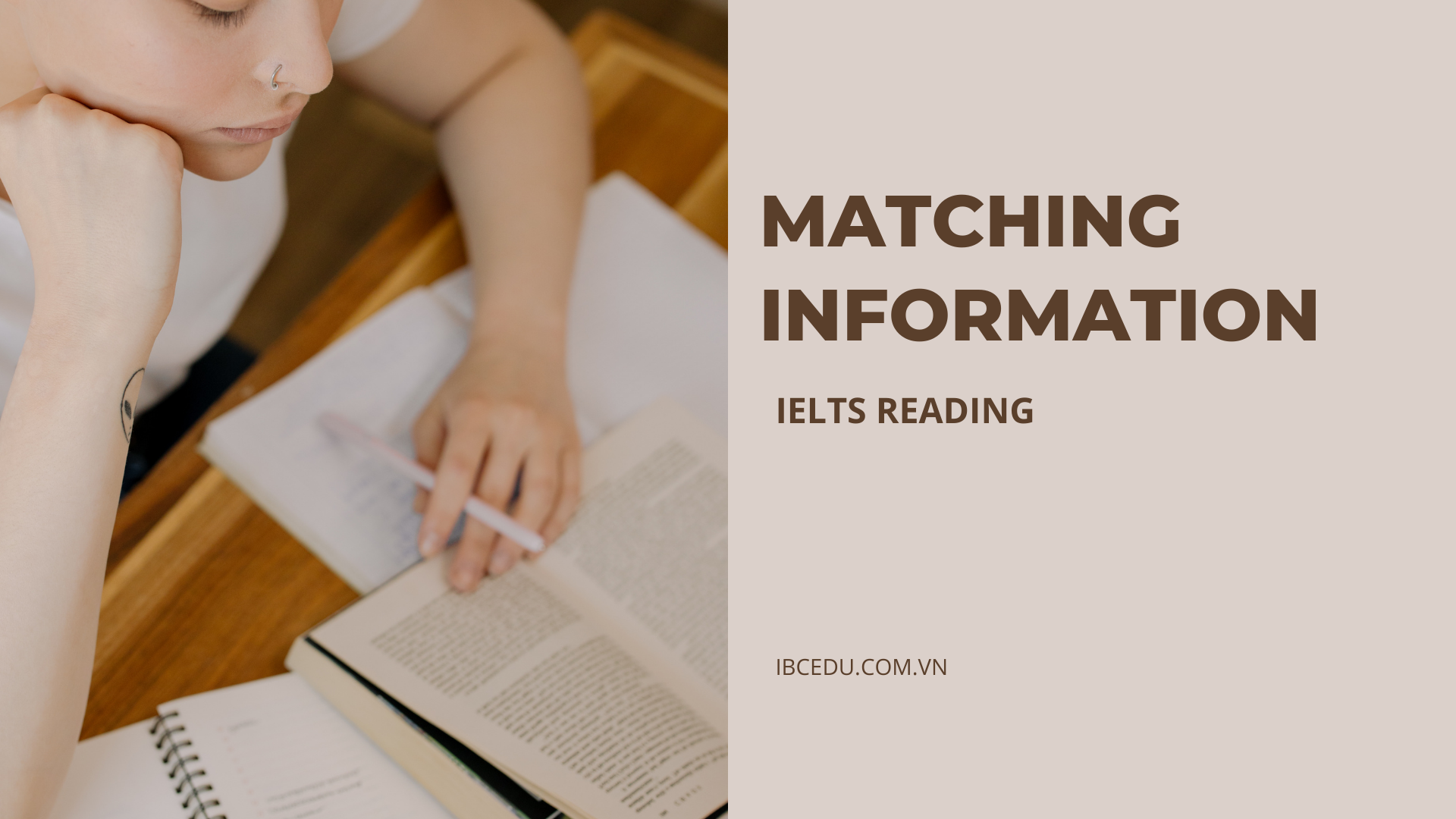
Nội dung
- Giới thiệu dạng bài
- Hướng dẫn và các lưu ý khi làm bài
- Từ định tính – Qualifier
- Luyện tập
1. Giới thiệu dạng bài
Đây là dạng bài yêu cầu bạn phải quyết định thông tin được đưa ra ở câu hỏi là Đúng hay Sai hoặc là thông tin không có trong bài đọc (Not Given). Dạng câu hỏi này sẽ đưa cho bạn 1 list các câu hỏi, và bạn cần chọn thông tin đó là Đúng – Sai – Không được đưa ra.
Sự khác nhau giữa True/ False/ Not given và Yes/No/ Not Given:
Tuy về bản chất là giống nhau khi phải so sánh với thông tin trong bài để đưa ra đáp án đúng, nhưng True False Not given và Yes No Not given có sự khác nhau đó. Với câu hỏi True False Not given, các bạn cần so sánh câu hỏi với “INFORMATION” trong bài còn với Yes No Not given chúng ta cần so sánh với “VIEW”.
- Information là những thông tin dạng Fact ở trong bài nên thông tin rõ ràng, bạn dễ dàng tìm được từ hoặc cụm từ đồng nghĩa/ trái nghĩa
- View là những quan điểm cá nhân của người viết nên việc xác định đúng hay sai sẽ có thể khó khăn hơn vì với quan điểm thì người viết có thể chỉ hàm ý mà không viết rõ ràng.
2. Hướng dẫn và các lưu ý khi làm bài
Bước 1: Đọc hiểu thông tin câu hỏi.
Lưu ý: yêu cầu đề bài là so sánh thông tin, vì vậy, nếu các bạn chỉ đi tìm các từ đồng nghĩa/ trái nghĩa sẽ rất dễ rơi vào bẫy của đề thi.
Bước 2: Chọn keyword để tìm vị trí thông tin trong bài.
Lưu ý: tránh chọn những từ bị lặp lại quá nhiều trong bài và ưu tiên theo thứ tự (Số => Chữ viết hoa => Thuật ngữ => Danh từ => Động từ/ Tính từ)
Bước 3: Đọc toàn bộ câu chứa keyword vừa tìm được và so sánh với statement được cho, nếu chưa khẳng định được nên chọn đáp án nào nên đọc thêm câu trước đó và sau đó để có thêm dữ kiện.
- Khi mọi thông tin trong đoạn văn và statement trùng khớp => chọn True/ Yes
- Khi có ít nhất 1 thông tin không đúng hoặc phủ định statement => chọn False/ No
- Khi thông tin trong bài không đủ để khẳng định là đúng hay sai => chọn Not given
Lưu ý: Trước khi các bạn kết luận 1 câu là Not given các bạn cần đọc hết đoạn văn hoặc cho tới khi thấy câu tiếp theo vì có thể 1 thông tin được chia thành nhiều câu, nếu không đọc hết sẽ chọn sai.
Bước 4: Khi ghi đáp án vào Answer Sheet cần đọc lại yêu cầu là True/ False/ Not given hay là Yes/No/ Not Given để đưa ra câu trả lời chính xác.
3. Từ định tính – Qualifier
Để đưa ra câu trả lời, các bạn cần tìm ra thông tin tương ứng với câu hỏi trong đoạn văn để so sánh và đưa ra kết luận. Tuy nhiên, một lý do phổ biến khiến các thí sinh mất điểm là do không để ý kỹ hoặc bỏ quên các từ chỉ định tính (Qualifier) – những từ thoạt nhìn có vẻ không quan trọng nhưng lại là yếu tố chủ chốt, xuất hiện nhằm mục đích làm thay đổi ý nghĩa của câu hỏi, gây sự nhầm lẫn và bối rối cho thí sinh khi lựa chọn đáp án đúng, đặc biệt là giữa đáp án False và Not Given.
Vậy chúng ta tìm hiểu QUALIFIER là gì nhé!
Trong ngữ pháp tiếng Anh, QUALIFIER là từ hoặc cụm từ có mục đích gia tăng hoặc giảm bớt ý nghĩa mà từ đứng sau biểu thị.
Chúng ta cùng phân tích ví dụ sau để thấy được tầm quan trọng của loại từ này nhé.
Thông tin trong bài đưa ra là:
“Demand for this exotic fabric eventually created the lucrative trade route now known as the Silk Road, taking silk westward and bringing gold, silver, and wool to the East. It was named the Silk Road after its most precious commodity, which was considered to be worth more than gold.”
Nhu cầu cho loại vải ngoại lai này cuối cùng đã tạo ra cung đường trao đổi béo bở mà ngày nay chúng ta biết với cái tên Con đường tơ lụa, người ta mang lụa tới phương Tây đổi lại mang vàng, bạc và len về phương Đông. Tên của Con đường Tơ lụa được đặt theo mặt hàng quý giá nhất được vận chuyển trên nó, cái mà được coi là quý hơn vàng.
– Câu hỏi với qualifier “most”: Gold was the most valuable material transported along the Silk Road.
Vàng là vật liệu có giá trị nhất được vận chuyển trên Con đường Tơ lụa.
=> Kết luận cho câu hỏi là SAI vì vật liệu quý giá nhất là Tơ lụa với thông tin “which was considered to be worth more than gold”
– Nhưng nếu chúng ta bỏ từ “most” thì câu hỏi chỉ còn là: “Gold was the valuable material transported along the Silk Road”
Vàng là vật liệu có giá trị được vận chuyển trên Con đường Tơ lụa
=> Kết luận lúc này sẽ là ĐÚNG vì vàng có được vận chuyển và vàng là vật liệu có giá trị.
Những loại QUALIFIER hay gặp trong bài thi Ielts Reading:

4. Luyện tập
Exercise 1:
The Pueblo Indians were a major cultural influence in the United States’ Four Corners region for over one thousand years. Initially, the civilisation was based in individual homesteads in the Colorado Plateau’s highlands, where its members farmed and developed various handicrafts, such as pottery and blankets. However, during the 11th and 12th centuries the Pueblo moved into the neighbouring canyons and built the massive multifamily dwellings from which their names are derived. Archaeologist Kristen Kuckelman believes this occurred after persistent droughts made farming on plateau lands impossible. She believes that the region’s inhabitants moved into the valleys because they were less impacted by the droughts. After they migrated, they had to learn how to produce food more effectively on less land, so they implemented a system of agricultural cooperation that eventually led to specialism. Once they settled in the canyons, the civilisation became increasingly more communal in order to maximise the returns on its labour.
Do the following statements agree with the information given in the passage?
Write
TRUE if the statement agrees with the information
FALSE if the statement contradicts the information
NOT GIVEN if there is no information on this
- The Pueblo got their names from their style of housing.
- The Pueblo moved into neighbouring communities with more farmland.
| Number | Words in Question | Words in Paragraph | Meaning |
| 1. True | + got their name
+ style of housing |
“the Pueblo … built the massive multifamily dwellings from which their names are derived.”
+ their names are derived. + Massive multifamily dwellings |
được xuất hiện/ bắt nguồn
những ngôi nhà lớn cho nhiều gia đình |
| 2. False | The Pueblo … more farmland.
+ The Pueble + moved into + More farmland |
After they migrated, they had to learn how to produce food more effectively on less land
+ They + migrated + Less farmland |
(Ngược nghĩa) |
Exercise 2:
Industrialisation and corporate growth in the late 19th century created an environment in which business correspondence increased monumentally, calling for a way to transcribe messages more quickly and legibly than handwritten script. The first device capable of fulfilling this need was the Sholes and Glidden typewriter. However, before it would become a commercial success, certain issues needed to be remedied. For instance, the type bars in their earliest typewriters moved very sluggishly, and the keys and other components tended to jam often. To fix this problem, Sholes – the designer – rearranged the layout of the keyboard so that the letters in subsequent versions of his machine no longer appeared in alphabetical order. Instead, he placed the keys with the intention that the most commonly used letter combinations in the English language, like ST and TH, would be spread far apart from one another. This modification caused a dramatic decline in mechanical jams and typing errors because the new arrangement increased the time it took for users to locate letters. Thereby it ensured that each key had enough time to fall back into its position before the next one was struck. These seemingly small changes were key to making typewriters a useful transcription and correspondence device.
Do the following statements agree with the information given in the passage?
Write
TRUE if the statement agrees with the information
FALSE if the statement contradicts the information
NOT GIVEN if there is no information on this
- Industrialisation created a need for a writing method that was faster than handwriting.
- The type bars on early typewriters had to be replaced often.
- The redesign made locating letters more time-consuming.
| Number | Words in Question | Words in Paragraph | Vocabulary |
| 1. True | Industrialisation created a need
Industrialisation created a need for a writing method that was faster than handwriting. |
Industrialisation and corporate growth in the late 19th century … calling for a way to transcribe messages more quickly and legibly than handwritten script. | industrialisation (n): công nghiệp hoá
Corporate (n): doanh nghiệp, tập đoàn Transcribe (v): phiên âm Legibly (adv): dễ đọc, rõ ràng |
| 2. Not Given | type bars on early typewriters | the type bars in their earliest typewriters moved very sluggishly, | type bar (n) phím đánh máy
Typewriter (n) máy đánh chữ Sluggishly (adv) một cách chậm chạp |
| 3. True | redesign | the new arrangement increased the time it took for users to locate letters | arrangement (n) sự sắp xếp |
Exercise 3:
While writing utensils have been around since antiquity, the pencil as we know it today only came into existence after the discovery of a large graphite deposit in the 1560s. According to the story, some English shepherds came across an unknown black substance stuck to the roots of a fallen tree, and handling it, found that it left behind a dark mark. Initially, they used it to draw brands on their livestock so that they could more easily differentiate whose sheep was whose, but they soon realised that the graphite, which they called ‘black lead’, could very easily be formed into sticks and used to write and draw. With string or twigs wrapped around it to reduce its brittleness, a stick of graphite not only required the user to apply less pressure than the metal alloy styluses then in use, but it also produced far darker lines. In addition, it was possible to erase graphite marks using a bit of soft bread and to draw on top of them with ink – neither of which could be done with lead or charcoal. It was not long before people began gluing bits of graphite into grooves cut into strips of wood, thereby creating the much sturdier wooden pencil we are now familiar with.
Do the following statements agree with the information given in the passage?
Write
TRUE if the statement agrees with the information
FALSE if the statement contradicts the information
NOT GIVEN if there is no information on this
- Writing with graphite sticks required more pressure than other writing tools.
- Users could not see graphite marks after they had been inked over.
| Number | Words in Question | Words in Paragraph | Vocabulary |
| 1. False | required more pressure | a stick of graphite not only required the user to apply less pressure than the metal alloy styluses then in use | pressure (n) áp lực
Graphite (n) chì Metal alloy: hợp kim Stylus (n): bút cảm ứng |
| 2. Not given | graphite marks after… inked over | it was possible to erase graphite marks using a bit of soft bread and to draw on top of them with ink | mark (v) đánh dấu
Ink (n) mực |



